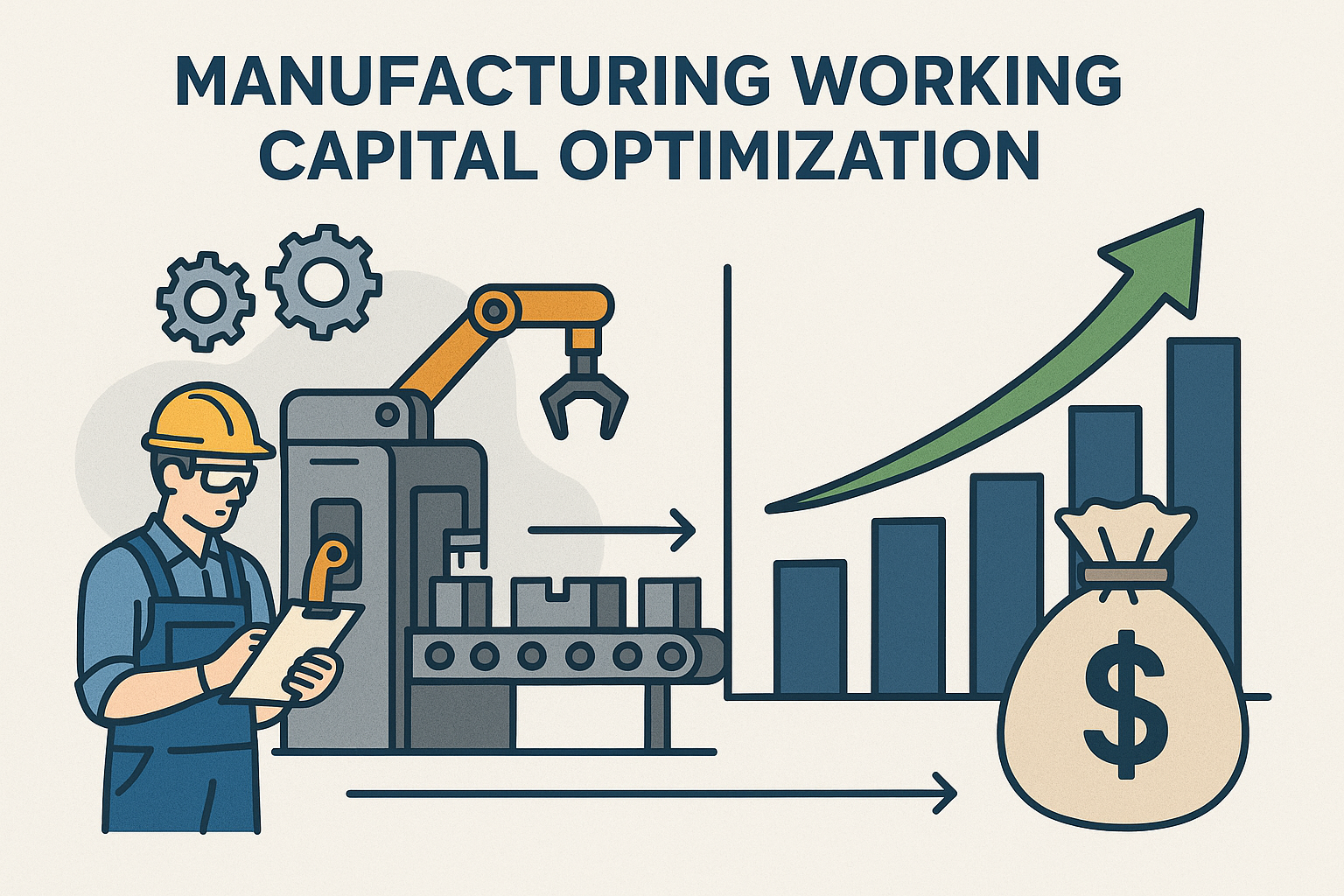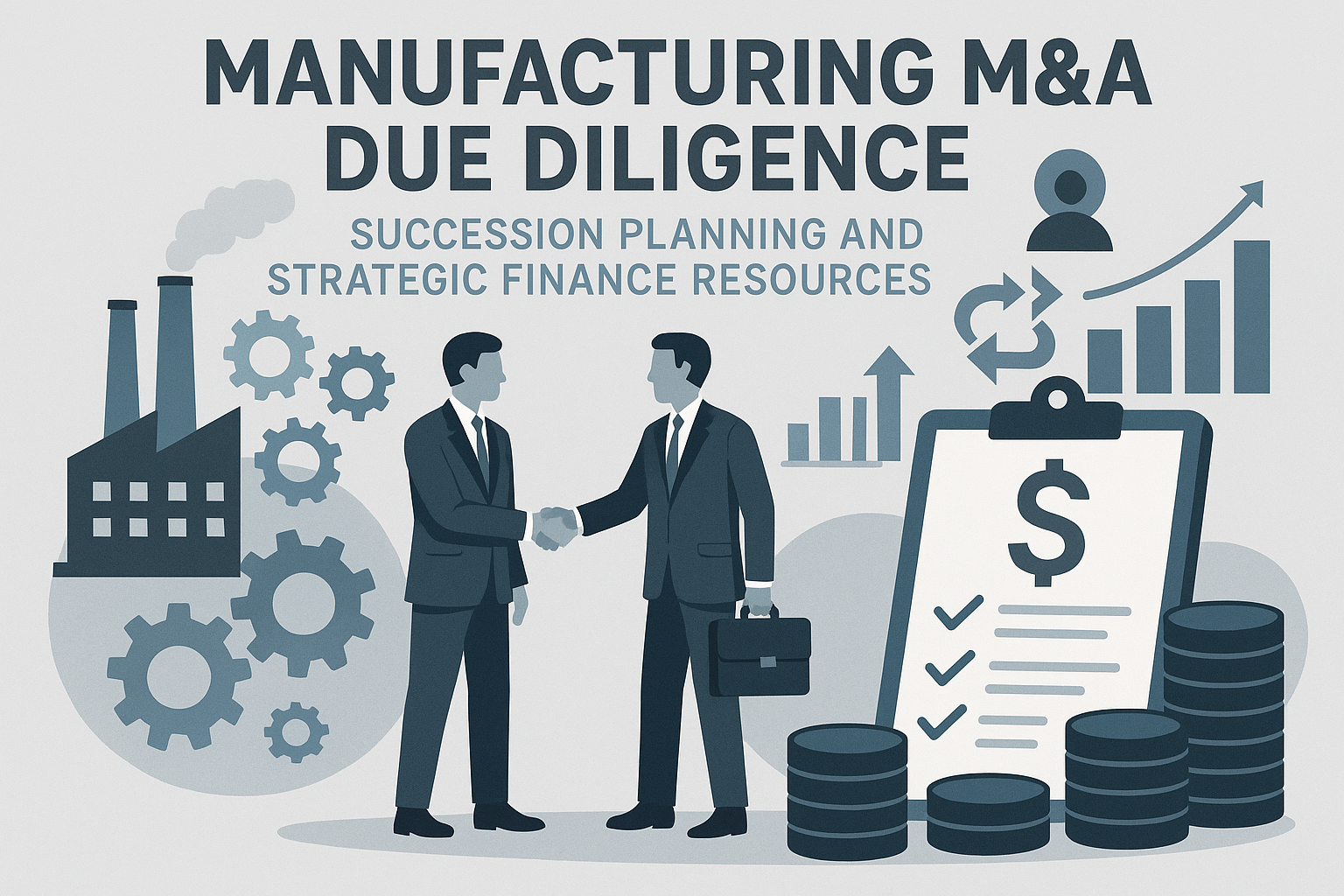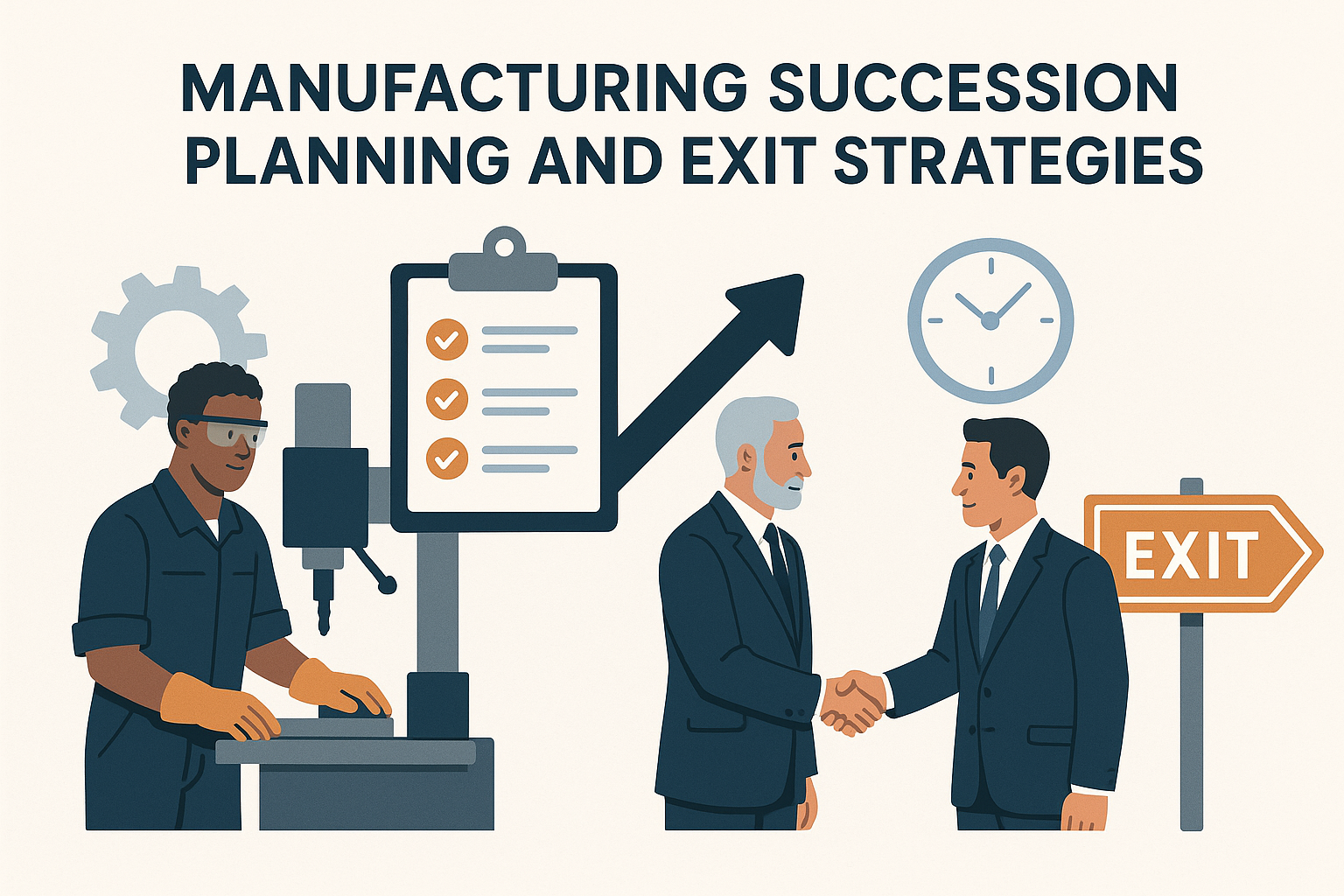Manufacturing Business Valuation: Advanced Methodologies for Mid-Market Companies
Sophisticated valuation approaches tailored for mid-market manufacturing companies, including enhanced DCF modeling, industry-specific market multiples, asset-based methodologies, and strategic factor integration. Essential guidance for CFOs and financial decision-makers navigating complex manufacturing valuations.
Shloimy Roth, CPA
Tax Preparer - Client Rep
Published: June 06, 2024
Executive Summary
Manufacturing business valuations require sophisticated methodologies that account for the unique characteristics of industrial operations. Unlike service businesses, manufacturers have complex asset structures, cyclical cash flows, and industry-specific risk factors that demand specialized valuation approaches.
- •Asset Intensity: Manufacturing companies typically have 40-60% of enterprise value tied to tangible assets
- •Working Capital Cycles: Seasonal fluctuations can impact cash flow by 20-30%
- •Technology Integration: Industry 4.0 investments create intangible value often missed in standard valuations
Manufacturing Valuation Methodology Framework
Enhanced DCF Analysis
- • Cyclical revenue modeling
- • Customer concentration adjustments
- • Technology investment benefits
- • Working capital seasonality
Market Multiple Analysis
- • Industry-specific multiples
- • Sub-sector comparisons
- • Size and risk adjustments
- • Control premium considerations
Asset-Based Valuation
- • Equipment & machinery appraisals
- • Real estate valuations
- • Intangible asset identification
- • Net asset value calculations
Understanding Manufacturing Valuation Complexities
Manufacturing business valuations present unique challenges that differentiate them from other sectors. These complexities must be thoroughly understood and addressed to arrive at credible and robust valuations.
Key Manufacturing Valuation Challenges
Capital-Intensive Nature
- • Asset Depreciation: Fixed assets depreciate over time, requiring accurate calculation and forecasting
- • Technological Obsolescence: Equipment can become obsolete faster than physical lifespan
- • Replacement vs. Book Value: Market value often differs significantly from depreciated cost
- • Specialized Equipment: Limited marketability for industry-specific machinery
Operational Complexities
- • Inventory Valuation: Raw materials, WIP, and finished goods require different approaches
- • Supply Chain Dependencies: Reliance on key suppliers creates risk factors
- • Cyclical Demand: Industry cycles significantly impact revenue and cash flow
- • Regulatory Compliance: Environmental and safety costs affect long-term projections
Enhanced Discounted Cash Flow (DCF) Analysis
The DCF method remains the gold standard for manufacturing valuations, but requires sophisticated modeling to capture industry dynamics and operational complexities.
Manufacturing-Specific DCF Adjustments
Revenue Modeling Considerations
Cyclical Demand Patterns
- • Historical Analysis: Analyze 5-10 years of revenue data to identify cyclical patterns
- • Industry Forecasts: Incorporate sector-specific growth projections and market trends
- • Seasonal Adjustments: Account for quarterly and monthly revenue variations
- • Economic Sensitivity: Model correlation with GDP, industrial production, and key indicators
Customer Concentration Risk
- • Revenue Concentration: Assess percentage of revenue from top 3, 5, and 10 customers
- • Contract Analysis: Evaluate contract terms, duration, and renewal probability
- • Risk Premium: Apply 150-300 basis point premium to WACC for high concentration
- • Scenario Modeling: Model impact of losing major customers on cash flows
DCF Enhancement Framework
- Base Case Development: Create realistic projections based on historical performance and market analysis
- Cyclical Adjustments: Incorporate industry cycle timing and amplitude into revenue forecasts
- Risk Adjustments: Apply appropriate risk premiums for customer concentration and operational risks
- Technology Benefits: Model margin expansion from automation and efficiency investments
- Sensitivity Analysis: Test key assumptions and identify primary value drivers
Case Study: Precision Components Manufacturing
Enhanced DCF Analysis Results
A £35M automotive parts manufacturer demonstrated the power of enhanced DCF modeling when traditional approaches undervalued the company by 20% due to cyclical patterns and customer concentration.
Company Profile
- • Revenue: £35M annually
- • EBITDA: £5.2M (14.9% margin)
- • Employees: 185 total
- • Markets: Automotive OEMs (65%), Aftermarket (35%)
- • Customer Concentration: Top 3 customers = 58% of revenue
Valuation Comparison
- • Traditional DCF: £28.5M enterprise value
- • Enhanced DCF: £34.2M enterprise value
- • Improvement: +20% valuation accuracy
- • Key Factors: Cyclical modeling, technology benefits
- • Risk Adjustments: Customer concentration premium applied
Enhanced DCF Methodology Applied
Revenue Enhancements
- • Automotive cycle modeling (7-year pattern)
- • OEM contract renewal probability (85%)
- • Aftermarket growth trajectory (8% CAGR)
- • New product introduction timeline
Cost Structure Refinements
- • Raw material price volatility modeling
- • Automation investment benefits (2.1% margin expansion)
- • Working capital seasonality patterns
- • Technology upgrade cycle planning
Market Multiple Analysis: Industry-Specific Approach
Manufacturing companies require industry-specific multiple analysis that considers operational and financial characteristics unique to industrial businesses.
Manufacturing Sub-Sector Multiple Analysis
Industry-Specific Valuation Multiples
| Manufacturing Sub-Sector | EV/Revenue | EV/EBITDA | Key Value Drivers |
|---|---|---|---|
| Automotive Parts | 0.9x - 1.8x | 5.2x - 7.8x | OEM relationships, technology content |
| Industrial Equipment | 1.2x - 2.5x | 6.5x - 9.2x | Aftermarket revenue, service content |
| Food Processing | 0.8x - 1.6x | 4.8x - 7.2x | Brand strength, distribution channels |
| Chemicals/Materials | 1.0x - 2.2x | 5.5x - 8.5x | Specialty vs. commodity, regulatory moats |
| Aerospace/Defense | 1.5x - 3.0x | 7.0x - 12.0x | Certification barriers, long-term contracts |
Multiple Analysis Best Practices
- 1. Comparable Selection: Focus on companies with similar business models, end markets, and size
- 2. Financial Normalization: Adjust for non-recurring items and accounting differences
- 3. Size Adjustments: Apply appropriate discounts for smaller company size and liquidity
- 4. Control Premiums: Add 20-30% premium for control transactions vs. minority trading
- 5. Market Timing: Consider current market conditions and cycle positioning
Asset-Based Valuation: Manufacturing Focus
Asset-based valuation is particularly relevant for capital-intensive manufacturing businesses where tangible assets form a significant portion of enterprise value.
Comprehensive Asset Valuation Framework
Tangible Asset Categories
Equipment & Machinery
- • Market Approach: Based on sales of similar used equipment
- • Cost Approach: Replacement cost new, less depreciation
- • Income Approach: Asset-specific contribution to cash flow
- • Condition Assessment: Age, maintenance, technological relevance
Real Estate Valuation
- • Sales comparison approach for similar industrial properties
- • Cost approach for specialized manufacturing facilities
- • Income capitalization for income-producing properties
- • Special use considerations and alternative use potential
Intangible Asset Identification
Manufacturing-Specific Intangibles
- • Customer relationships and long-term supply agreements
- • Proprietary manufacturing processes and trade secrets
- • Quality certifications (ISO, AS9100, FDA approvals)
- • Environmental permits and regulatory approvals
- • Trained workforce and institutional knowledge
Valuation Methodologies
- • Relief-from-Royalty: For patents and technology
- • Multi-Period Excess Earnings: For customer relationships
- • Cost-to-Recreate: For assembled workforce and processes
- • Market Transactions: For comparable intangible sales
Asset-Based Valuation Case Study
Northern Fabricators Ltd: Asset Valuation
A comprehensive asset-based valuation of a £40M general engineering firm with significant owned property and specialized machinery, considering both going-concern and liquidation scenarios.
Asset & Liability Breakdown (Fair Market Values)
| Assets (£ millions) | Value | Liabilities (£ millions) | Value |
|---|---|---|---|
| Cash & Equivalents | 0.5 | Accounts Payable | 2.5 |
| Accounts Receivable (Net) | 3.0 | Accrued Expenses | 1.0 |
| Inventory (NRV) | 4.5 | Bank Loan | 5.0 |
| Land & Buildings (Appraised) | 8.0 | Deferred Tax Liability | 0.8 |
| Plant & Machinery (Appraised) | 6.5 | Total Liabilities | 9.3 |
| Patents & IP (Valued) | 1.0 | ||
| Total Assets | 23.5 |
Valuation Analysis & Insights
Key Findings
- • Real estate represents 56% of total asset value
- • Machinery appraisal reflects technological currency
- • Inventory provisions for slow-moving stock applied
- • Intangible assets provide additional value beyond tangibles
Strategic Implications
- • Asset-based value provides valuation floor
- • Real estate value supports debt capacity
- • Going-concern value likely exceeds NAV
- • Asset optimization opportunities identified
Technology and Industry 4.0 Impact
The wave of technological advancement is reshaping manufacturing valuations. Companies embracing Industry 4.0 technologies command premium valuations due to enhanced efficiency and competitive positioning.
Technology Value Drivers in Manufacturing
Automation and Robotics Impact
- • Labor Cost Reduction: 15-25% reduction in direct labor costs
- • Quality Improvement: 40-60% reduction in defect rates
- • Productivity Gains: 20-35% increase in output per hour
- • Consistency: Reduced variability in production processes
IoT and Predictive Maintenance
- • Downtime Reduction: 30-50% reduction in unplanned downtime
- • Maintenance Optimization: 20-25% reduction in maintenance costs
- • Asset Life Extension: 15-20% increase in equipment lifespan
- • Energy Efficiency: 10-15% reduction in energy consumption
Valuation Premium for Technology Leaders
Manufacturing companies demonstrating successful technology integration command significant valuation premiums:
- • EV/EBITDA Premium: 15-25% above industry average
- • Revenue Multiple Premium: 20-30% for technology-enabled growth
- • Risk Discount Reduction: Lower WACC due to operational stability
- • Strategic Value: Higher acquisition multiples from strategic buyers
Implementation Framework
Successfully implementing advanced manufacturing valuation methodologies requires a structured approach and adherence to professional standards and best practices.
Step-by-Step Valuation Process
Phase 1: Foundation
- • Purpose Definition: Clarify valuation objective and standard of value
- • Data Gathering: Collect financial, operational, and market data
- • Business Analysis: Understand operations, markets, and competitive position
- • Risk Assessment: Identify key risk factors and mitigation strategies
Phase 2: Analysis
- • Financial Normalization: Adjust for non-recurring and non-operating items
- • Methodology Selection: Choose appropriate valuation approaches
- • Model Development: Build DCF, multiple, and asset-based models
- • Sensitivity Testing: Analyze impact of key assumption changes
Phase 3: Conclusion
- • Value Reconciliation: Compare results across methodologies
- • Weight Assignment: Determine appropriate weighting for each approach
- • Final Conclusion: Arrive at value estimate or range
- • Report Preparation: Document analysis and conclusions
Quality Assurance Best Practices
- 1. Independence: Maintain objectivity and professional skepticism throughout the process
- 2. Documentation: Maintain detailed records of data sources, assumptions, and methodologies
- 3. Peer Review: Have valuations reviewed by qualified professionals
- 4. Standards Compliance: Adhere to relevant professional valuation standards
- 5. Continuous Learning: Stay current with industry trends and valuation practices
Conclusion: Strategic Valuation Excellence
Mastering advanced manufacturing valuation methodologies is essential for CFOs, business owners, and financial professionals working with mid-market manufacturing companies. The sophisticated approaches outlined in this guide provide the foundation for accurate valuations that support strategic decision-making and optimal transaction outcomes.
Key Success Factors
Methodology Excellence
- • Enhanced DCF modeling with industry-specific adjustments
- • Comprehensive market multiple analysis with peer comparisons
- • Thorough asset-based valuation including intangibles
- • Integration of operational and strategic considerations
- • Technology impact assessment and valuation
Value Optimization Strategies
- • Diversify customer base to reduce concentration risk
- • Invest in automation and Industry 4.0 technologies
- • Develop proprietary processes and intellectual property
- • Build strong management teams and operational systems
- • Maintain current technology to minimize obsolescence risk
Need Expert Manufacturing Valuation Services?
Our manufacturing valuation specialists have completed 200+ mid-market manufacturing valuations. We combine deep industry expertise with sophisticated methodologies to deliver accurate, defensible valuations.
Related Manufacturing Financial Resources

Advanced Working Capital Optimization for Mid-Market Manufacturers
Specialized strategies for optimizing inventory, receivables, and payables in manufacturing.
Read Article
Manufacturing M&A: Financial Due Diligence and Tax Optimization
Comprehensive framework for financial due diligence in manufacturing acquisitions.
Read Article
Manufacturing Succession Planning: Advanced Tax Strategies
Sophisticated succession planning approaches for family-owned manufacturing businesses.
Read Article